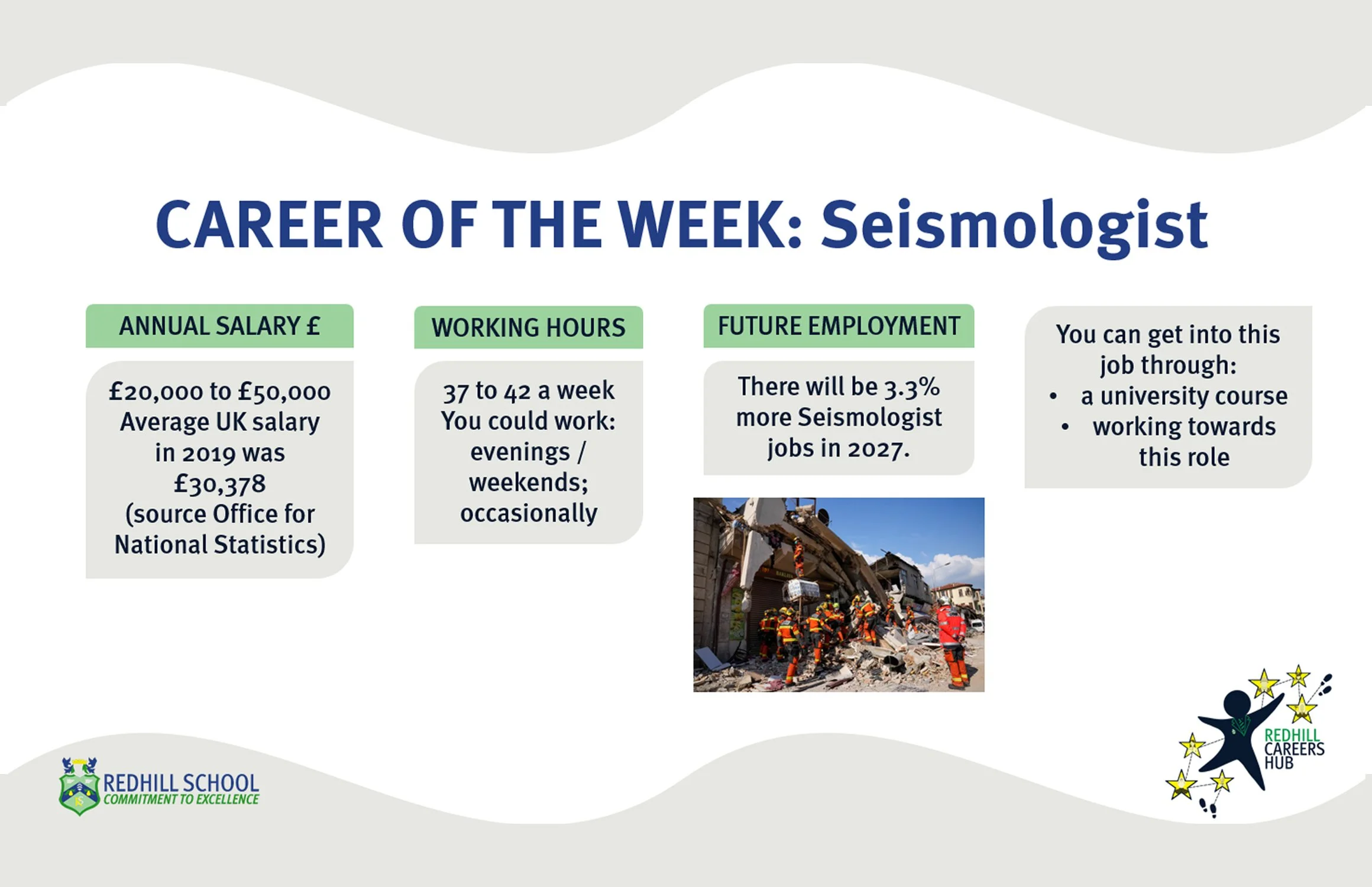Career of the week: Seismologist
Day to day tasks
In your day-to-day tasks you may:
monitor and analyse data from seismic sensors around the world
map seismic regions and fault lines in the Earth's surface
develop early warning systems for earthquake zones
investigate target sites for new seismic stations
search for oil and gas deposits under land and sea
produce survey reports for mining and energy companies
attend conferences and publish research findings
take students on field trips to study earthquake and volcano hot spots
teach students, or train professionals in related fields like people working in disaster risk reduction
Working environment
You may need to wear safety clothing and use safety equipment.
You could work at a research facility, at a university or in a laboratory.
Your working environment may be physically active and you may spend nights away from home.
You can get into this job through:
a university course
working towards this role
University
You can do a degree or postgraduate qualification in:
geology
geography
Earth science
geophysics
environmental science
computer science
Many employers will expect you to have, or be working towards, a PhD in a relevant subject.
Entry requirements
You'll usually need:
5 GCSEs at grades 9 to 4 (A* to C), or equivalent, including English, maths and science
2 or 3 A levels, or equivalent, including a science, for a degree
a degree in a relevant subject for postgraduate study
Work
You could start as a PhD research assistant, for example in a university Earth sciences or geophysics engineering department. With further training and experience you could become a seismologist.
Further information
You can discover more about working in seismology from The Geological Society and the British Geological Survey.

